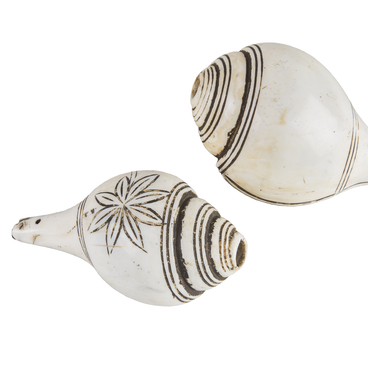The Transbaikal Regional Museum of Local Lore houses a wooden sculpture of a bird. It is not big: 13 centimeters in height, and 8 centimeters in width. The name of the figurine “chipiche-chiche” translates from the Evenki language as “titmouse”.
The chipiche-chiche figurine was an amulet: it protected a child from diseases and evil spirits. The Evenk tribes of Transbaikal had a bird cult. Birds were regarded as shaman’s assistants in various rituals: healing, obtaining deer’ souls and hunting luck, and others.
The Evenks worshipped the raven (“oli”), the eagle (“kiran”), the swan (“gakh”), the loon (“ukan”), the teal ducks (“chirkoni”), the black woodpecker (“kirokta”), the cuckoo (“ku-ku”), the wader (“chukchumo”), the snipe (“oliptykin”) and the titmouse (“chipiche-chiche”). It was strictly forbidden to kill these birds or eat their meat.
A figurine of a titmouse was often put by the Evenks into the bed of a newborn boy. On the 6th or 7th day of the child’s life, his father made him a new wooden cradle, if they did not keep the old one from other children. They made cradles from birch bark and lined them with rovduga — reindeer or elk hide.
Before putting the child into the new cradle, they kept a hammer and knife in it for three days so that the boy would be a good hunter. A wooden figurine of a bird was placed there as well, so that the newborn was healthy.
They attached various pendants to the headboard and side edges. Each of them had its meaning: the front lower teeth of a hoofed animal — for the newborn to become a skillful hunter in the future; the teeth of a bear, fox, squirrel, ermine — for the child to easily climb mountains and defeat enemies. Human figurines were believed to substitute the child’s soul when it traveled when the baby was asleep, they guarded and comforted the child.
Pendants in the shape of toads and frogs protected the sleeping child from stomach pain, while coins and circles above the headboard signified future wealth.
If the child fell ill despite the chipiche-chiche amulet, he would temporarily be given a frightening name to scare away the spirit that caused the disease. Most often in this case he was named after amphibians or insects.
The chipiche-chiche figurine was an amulet: it protected a child from diseases and evil spirits. The Evenk tribes of Transbaikal had a bird cult. Birds were regarded as shaman’s assistants in various rituals: healing, obtaining deer’ souls and hunting luck, and others.
The Evenks worshipped the raven (“oli”), the eagle (“kiran”), the swan (“gakh”), the loon (“ukan”), the teal ducks (“chirkoni”), the black woodpecker (“kirokta”), the cuckoo (“ku-ku”), the wader (“chukchumo”), the snipe (“oliptykin”) and the titmouse (“chipiche-chiche”). It was strictly forbidden to kill these birds or eat their meat.
A figurine of a titmouse was often put by the Evenks into the bed of a newborn boy. On the 6th or 7th day of the child’s life, his father made him a new wooden cradle, if they did not keep the old one from other children. They made cradles from birch bark and lined them with rovduga — reindeer or elk hide.
Before putting the child into the new cradle, they kept a hammer and knife in it for three days so that the boy would be a good hunter. A wooden figurine of a bird was placed there as well, so that the newborn was healthy.
They attached various pendants to the headboard and side edges. Each of them had its meaning: the front lower teeth of a hoofed animal — for the newborn to become a skillful hunter in the future; the teeth of a bear, fox, squirrel, ermine — for the child to easily climb mountains and defeat enemies. Human figurines were believed to substitute the child’s soul when it traveled when the baby was asleep, they guarded and comforted the child.
Pendants in the shape of toads and frogs protected the sleeping child from stomach pain, while coins and circles above the headboard signified future wealth.
If the child fell ill despite the chipiche-chiche amulet, he would temporarily be given a frightening name to scare away the spirit that caused the disease. Most often in this case he was named after amphibians or insects.



